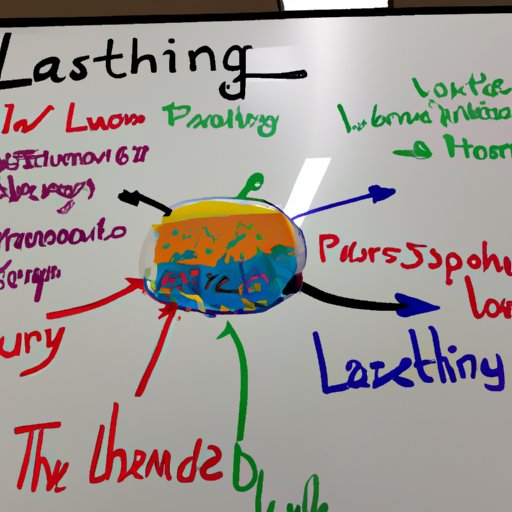Introduction
Leadership is an essential skill for young people to learn. It teaches them how to take initiative, manage their time effectively, communicate with others, and lead teams to success. Unfortunately, many schools lack a proper leadership curriculum that allows students to develop those skills. In this article, we will discuss various methods for teaching leadership to students, including experiential learning, service learning projects, mentorship programs, and group activities.
Developing Student Leadership Through Experiential Learning
Experiential learning is a form of education that focuses on hands-on experiences rather than lectures or textbooks. It encourages students to think critically and solve problems in real-world scenarios. By taking part in experiential learning activities, students can acquire valuable leadership skills such as problem-solving, decision-making, and communication.
The benefits of experiential learning are numerous. It allows students to apply the knowledge they have acquired in the classroom to real-world situations. It also encourages collaboration and teamwork, as well as creativity and innovation. Finally, it helps students to develop important life skills such as self-confidence and resilience.
Examples of experiential learning activities include field trips, simulations, role-playing, and debates. Field trips provide students with firsthand experience of the world around them. Simulations allow them to practice problem-solving skills in a safe environment. Role-playing activities encourage students to assume different roles and think from different perspectives. Debates help students to sharpen their critical thinking and communication skills.
Creating a Student-Led Leadership Course
Creating a student-led leadership course is one of the best ways to teach leadership to students. The first step is to design the course outline. This should include topics such as goal-setting, communication, and problem-solving. It should also specify what types of activities and assessments will be used to evaluate student performance.
Once the course outline has been created, the next step is to choose an appropriate curriculum. The curriculum should focus on real-world scenarios that challenge students to think critically and come up with creative solutions. It should also emphasize the importance of collaboration and teamwork.
Finally, it’s important to assess student performance throughout the course. This can be done through quizzes, essays, or presentations. It’s also important to provide feedback to students so they can improve their performance.

Utilizing Service Learning Projects to Teach Leadership
Service learning projects are another great way to teach leadership to students. Service learning is a type of experiential learning that involves students working with a community organization to address a social issue. It provides students with an opportunity to gain practical experience while making a positive impact in their community.
The benefits of service learning projects include developing empathy and understanding for others, learning about the root causes of social issues, and building leadership skills. Examples of service learning projects include volunteering at a homeless shelter, organizing a fundraising event, or creating a public awareness campaign.
When implementing service learning projects, it’s important to ensure that students understand the project’s purpose and goals. It’s also important to provide guidance and support throughout the project. Finally, it’s important to assess student performance and provide feedback.

Teaching Leadership Through Mentorship Programs
Mentorship programs are another effective way to teach leadership to students. A mentorship program pairs students with experienced professionals who can provide advice and guidance. It helps students to develop an understanding of the leadership skills needed to succeed in the workplace.
The advantages of mentorship programs include providing students with access to mentors who have experience in the field they are interested in, helping them to build important professional networks, and allowing them to gain insight into potential career paths. When setting up a mentorship program, it’s important to find the right mentor for each student and establish clear expectations for both parties.
Mentorship programs can also be challenging. It’s important to ensure that mentors are available to meet with students regularly and provide meaningful feedback. Additionally, it’s important to make sure that the program is properly managed and monitored to ensure that it is meeting its objectives.

Incorporating Group Activities That Challenge Students to Lead Others
Group activities are another great way to teach leadership to students. Group activities provide students with an opportunity to work together to achieve a common goal. They also encourage students to practice communication, collaboration, and problem-solving skills.
The benefits of group activities include developing team-building skills, improving communication skills, and providing an opportunity for students to practice leading others. Examples of group activities include scavenger hunts, team sports, and group projects. When facilitating group activities, it’s important to set clear expectations and provide feedback to students.
Conclusion
Leadership is an important skill for young people to learn. Schools and educators can use a variety of methods to teach leadership to students, including experiential learning, service learning projects, mentorship programs, and group activities. Each of these methods has its own advantages and challenges, but all of them can help students to develop important leadership skills.
(Note: Is this article not meeting your expectations? Do you have knowledge or insights to share? Unlock new opportunities and expand your reach by joining our authors team. Click Registration to join us and share your expertise with our readers.)
